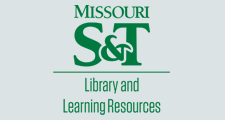Masters Theses
Abstract
"This thesis demonstrates an algorithm to identify the features of radial streaming and pseudopods found in dermoscopy images of malignant melanoma. The algorithm includes preprocessing images using the Principal Component Transform and an application of mathematical techniques to extract the desired features from the lesion image on the basis of color, size, shape, and orientation with respect to the lesion boundary. These identified features are further used to classify the lesion as malignant or benign. The proposed algorithm has produced a diagnostic accuracy of 90.50% for the training set of 31 malignant and 109 benign images and a diagnostic accuracy of 93.52% for the test set of 31 malignant and 110 benign images using Receiver Operating Characteristic curve analysis. The code is implemented in MATLAB® 7.4.0.287 (R2007a)"--Abstract, page iii.
Advisor(s)
Moss, Randy Hays, 1953-
Committee Member(s)
Stanley, R. Joe
Stoecker, William V.
Department(s)
Electrical and Computer Engineering
Degree Name
M.S. in Computer Engineering
Publisher
University of Missouri--Rolla
Publication Date
Fall 2007
Pagination
viii, 68 pages
Note about bibliography
Includes bibliographical references (page 67).
Rights
© 2007 Sayali Prabhakar Deshpande, All rights reserved.
Document Type
Thesis - Open Access
File Type
text
Language
English
Subject Headings
Image processing -- Computer programs
Melanoma -- Diagnosis
Skin -- Cancer -- Diagnosis
Thesis Number
T 9887
Print OCLC #
785409403
Electronic OCLC #
905651213
Link to Catalog Record
Electronic access to the full-text of this document is restricted to Missouri S&T users. Otherwise, request this publication directly from Missouri S&T Library or contact your local library.
http://merlin.lib.umsystem.edu:80/record=b8531274~S5Recommended Citation
Deshpande, Sayali Prabhakar, "Identification of radial streaming and pseudopods in dermoscopy images" (2007). Masters Theses. 4103.
https://scholarsmine.mst.edu/masters_theses/4103


